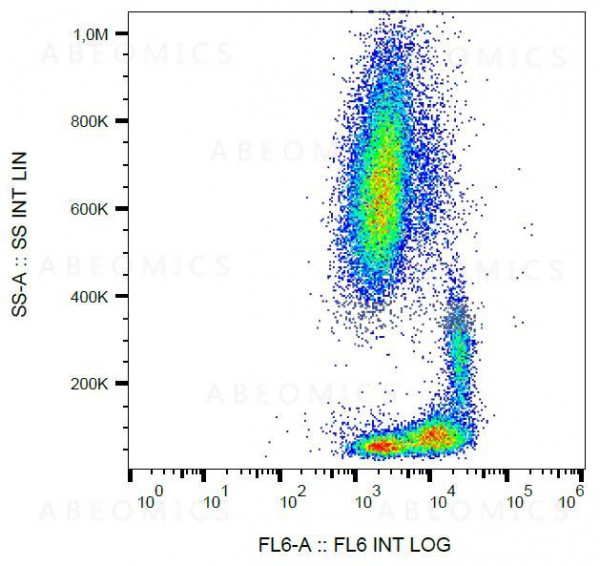Cookie preferences
This website uses cookies, which are necessary for the technical operation of the website and are always set. Other cookies, which increase the comfort when using this website, are used for direct advertising or to facilitate interaction with other websites and social networks, are only set with your consent.
Configuration
Technically required
These cookies are necessary for the basic functions of the shop.
"Allow all cookies" cookie
"Decline all cookies" cookie
CSRF token
Cookie preferences
Currency change
Customer-specific caching
FACT-Finder tracking
Individual prices
Selected shop
Session
Comfort functions
These cookies are used to make the shopping experience even more appealing, for example for the recognition of the visitor.
Note
Show the facebook fanpage in the right blod sidebar
Statistics & Tracking
Affiliate program
Conversion and usertracking via Google Tag Manager
Track device being used

| Item number | Size | Datasheet | Manual | SDS | Delivery time | Quantity | Price |
|---|---|---|---|---|---|---|---|
| ABE-30-1691-100 | 100 tests | - |
3 - 11 business days* |
713.00€
|
If you have any questions, please use our Contact Form.
You can also order by e-mail: info@biomol.com
Larger quantity required? Request bulk
You can also order by e-mail: info@biomol.com
Larger quantity required? Request bulk
CD29 (beta1 integrin subunit, GPIIa) forms non-covalently linked heterodimers with at least 6... more
Product information "Anti-CD29 / Integrin beta1 chain Monoclonal Antibody (Clone:MEM-101A)-APC Conjugated"
CD29 (beta1 integrin subunit, GPIIa) forms non-covalently linked heterodimers with at least 6 different alpha chains (alpha1-alpha6, CD49a-f) determining the binding properties of beta1 (VLA) integrins. These integrins mediate cell adhesion to collagen, fibronectin, laminin and other extracellular matrix (ECM) components. This interaction hinders cell death, whereas disruption of anchorage to ECM leads to apoptosis. Decreased expression of most beta1 integrins correlates with acquiring multidrug resistance of tumour cells during selection in presence of antitumour drug. In platelets, translocation of intracellular pool of beta1 integrins to the plasma membrane following thrombin stimulation. These integrins are also up-regulated in leukocytes during emigration and extravascular migration and appear to be critically involved in regulating the immune cell trafficking from blood to tissue, as well as in regulating tissue damage and disease symptoms related to inflammatory bowel disease. Through a beta1 integrin-dependent mechanism, fibronectin and type I collagen enhance cytokine secretion of human airway smooth muscle in response to IL-1beta. Protein function: Integrins alpha-1/beta-1, alpha-2/beta-1, alpha-10/beta- 1 and alpha-11/beta-1 are receptors for collagen. Integrins alpha- 1/beta-1 and alpha-2/beta-2 recognize the proline-hydroxylated sequence G-F-P-G-E-R in collagen. Integrins alpha-2/beta-1, alpha- 3/beta-1, alpha-4/beta-1, alpha-5/beta-1, alpha-8/beta-1, alpha- 10/beta-1, alpha-11/beta-1 and alpha-V/beta-1 are receptors for fibronectin. Alpha-4/beta-1 recognizes one or more domains within the alternatively spliced CS-1 and CS-5 regions of fibronectin. Integrin alpha-5/beta-1 is a receptor for fibrinogen. Integrin alpha-1/beta-1, alpha-2/beta-1, alpha-6/beta-1 and alpha-7/beta-1 are receptors for lamimin. Integrin alpha-6/beta-1 (ITGA6:ITGB1) is present in oocytes and is involved in sperm-egg fusion. Integrin alpha-4/beta-1 is a receptor for VCAM1. It recognizes the sequence Q-I-D-S in VCAM1. Integrin alpha-9/beta-1 is a receptor for VCAM1, cytotactin and osteopontin. It recognizes the sequence A-E-I-D-G-I-E-L in cytotactin. Integrin alpha-3/beta- 1 is a receptor for epiligrin, thrombospondin and CSPG4. Alpha- 3/beta-1 may mediate with LGALS3 the stimulation by CSPG4 of endothelial cells migration. Integrin alpha-V/beta-1 is a receptor for vitronectin. Beta-1 integrins recognize the sequence R-G-D in a wide array of ligands. Isoform 2 interferes with isoform 1 resulting in a dominant negative effect on cell adhesion and migration (in vitro). When associated with alpha-7/beta-1 integrin, regulates cell adhesion and laminin matrix deposition. Involved in promoting endothelial cell motility and angiogenesis. Involved in osteoblast compaction through the fibronectin fibrillogenesis cell-mediated matrix assembly process and the formation of mineralized bone nodules. May be involved in up- regulation of the activity of kinases such as PKC via binding to KRT1. Together with KRT1 and RACK1, serves as a platform for SRC activation or inactivation. Plays a mechanistic adhesive role during telophase, required for the successful completion of cytokinesis. Integrin alpha-3/beta-1 provides a docking site for FAP (seprase) at invadopodia plasma membranes in a collagen- dependent manner and hence may participate in the adhesion, formation of invadopodia and matrix degradation processes, promoting cell invasion. ITGA4:ITGB1 binds to fractalkine (CX3CL1) and may act as its coreceptor in CX3CR1-dependent fractalkine signaling (PubMed:23125415, PubMed:24789099). ITGA4:ITGB1 and ITGA5:ITGB1 bind to PLA2G2A via a site (site 2) which is distinct from the classical ligand-binding site (site 1) and this induces integrin conformational changes and enhanced ligand binding to site 1 (PubMed:18635536, PubMed:25398877). ITGA5:ITGB1 acts as a receptor for fibrillin-1 (FBN1) and mediates R-G-D-dependent cell adhesion to FBN1 (PubMed:12807887, PubMed:17158881). ITGA5:ITGB1 is a receptor for IL1B and binding is essential for IL1B signaling (PubMed:29030430). [The UniProt Consortium]
| Keywords: | Anti-FNRB, Anti-CD29, Anti-ITGB1, Anti-GPIIA, Anti-Integrin beta-1, Anti-Glycoprotein IIa, Anti-VLA-4 subunit beta, Anti-Fibronectin receptor subunit beta, Anti-CD29 / Integrin beta1 chain Monoclonal Antibody (Clone:MEM-101A)-APC Conjugated |
| Supplier: | Abeomics |
| Supplier-Nr: | 30-1691 |
Properties
| Application: | FC, IP, WB |
| Antibody Type: | Monoclonal |
| Clone: | MEM-101A |
| Conjugate: | APC |
| Host: | Mouse |
| Species reactivity: | human, pig, dog |
| Immunogen: | Raji Burkitt's lymphoma cell line |
Database Information
| KEGG ID : | K05719 | Matching products |
| UniProt ID : | P05556 | Matching products |
| Gene ID | GeneID 3688 | Matching products |
Handling & Safety
| Storage: | +4°C |
| Shipping: | +4°C (International: +4°C) |
Caution
Our products are for laboratory research use only: Not for administration to humans!
Our products are for laboratory research use only: Not for administration to humans!
Information about the product reference will follow.
more
You will get a certificate here
Viewed



